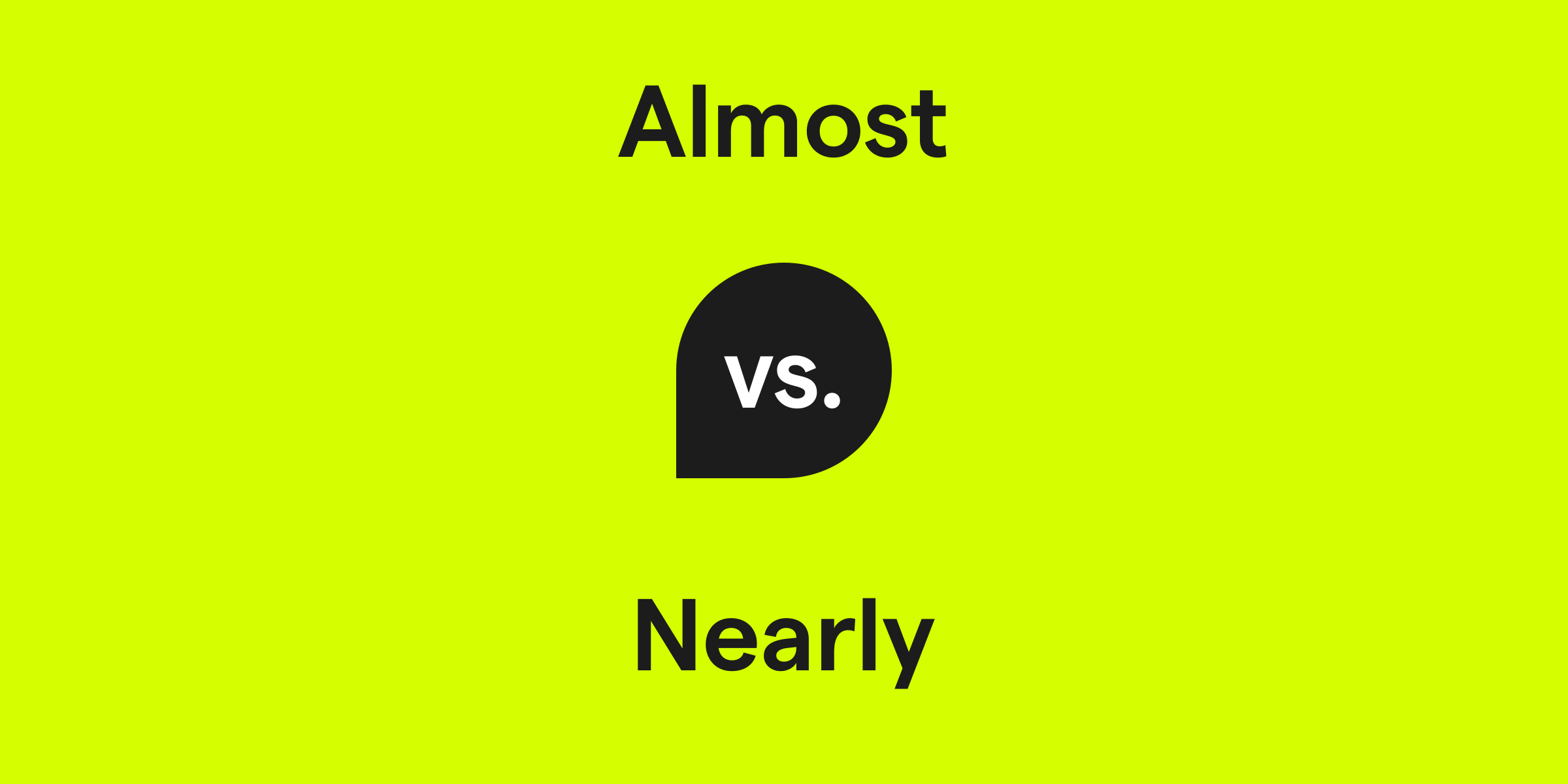Almost vs. Nearly: What's the Difference?
The words almost and nearly are close synonyms often used interchangeably to indicate that something is not quite complete or total. Almost is typically used to suggest that something is approaching a certain point or level, but is not entirely reached. Nearly, while very similar in meaning, can convey a slight nuance of even closer proximity to the endpoint or goal. Understanding the context in which each word is used is vital, as slight variations in connotation can subtly change the meaning of a sentence.

How do you use the word almost in a sentence?
Almost is used when you want to express that something is on the verge of happening or is only a small measure away from a certain point. It can emphasize the closeness to completion or an upper limit. Almost has a broad usage and can modify numbers, quantities, situations, and actions, highlighting that there is still some minimal degree of separation from the total or ultimate objective.
Examples of almost in a sentence
- He had almost finished his meal when the phone rang.
- I've read almost all the books in this library.
- She was almost certain she had locked the door.
How do you use the word nearly in a sentence?
The word nearly often implies an even closer approach to a goal or endpoint than almost. It is generally used when something is close to being done or a particular quantity or value is about to be reached. Nearly can also convey a subtle tone of surprise that the expectation was not met or that an outcome came close to but didn’t achieve the desired result.
Examples of nearly in a sentence
- I was nearly late to my own wedding!
- The team nearly won the championship last season.
- They had nearly completed the project before funding was cut.
Almost and nearly definition, parts of speech, and pronunciation
Almost definition:
Almost (adverb): A word used to indicate that something is very close to being the case or to happening but is not completely the case or does not completely happen.
Almost parts of speech:
Almost pronunciation:
Phonetically spelled: [awl-mohst], with the stress on the first syllable.
Nearly definition:
Nearly (adverb): Used to signify that something is approaching a goal, amount, or point in time but has not yet fully achieved it; very close to.
Nearly parts of speech:
Nearly pronunciation:
Phonetically spelled: [neer-lee], with the stress on the first syllable.
Almost (adverb): A word used to indicate that something is very close to being the case or to happening but is not completely the case or does not completely happen.
Almost parts of speech:
- As an adverb, almost modifies verbs, adjectives, or other adverbs, often indicating incompleteness: 'The cup is almost full.'
Almost pronunciation:
Phonetically spelled: [awl-mohst], with the stress on the first syllable.
Nearly definition:
Nearly (adverb): Used to signify that something is approaching a goal, amount, or point in time but has not yet fully achieved it; very close to.
Nearly parts of speech:
- Acting as an adverb similar to almost, nearly modifies verbs, adjectives, or other adverbs, usually to convey a small margin remaining: 'The theater is nearly empty.'
Nearly pronunciation:
Phonetically spelled: [neer-lee], with the stress on the first syllable.
Almost vs. nearly in a nutshell
While almost and nearly can often be used interchangeably, their subtle differences lie in the nuance of how close something is to completion. Almost might imply a slightly greater distance from the ultimate goal than nearly. Context can determine their connotation and usage, where nearly might suggest a greater sense of proximity or an unexpected shortfall. Despite these differences, both adverbs play an essential role in expressing nearness to an endpoint and are powerful tools in the art of nuanced communication.
Get AI Writing Assistance Wherever You Type
Make sure your vocabulary is on point and every punctuation mark is in the right place, no matter where you’re working. Grammarly works across more than 1 million websites and apps so you can improve your writing without copying, pasting, or breaking focus.

More Commonly Confused Words
Interest piqued? Pore (not pour) over other commonly confused words to help your writing reach peak (not peek) performance.